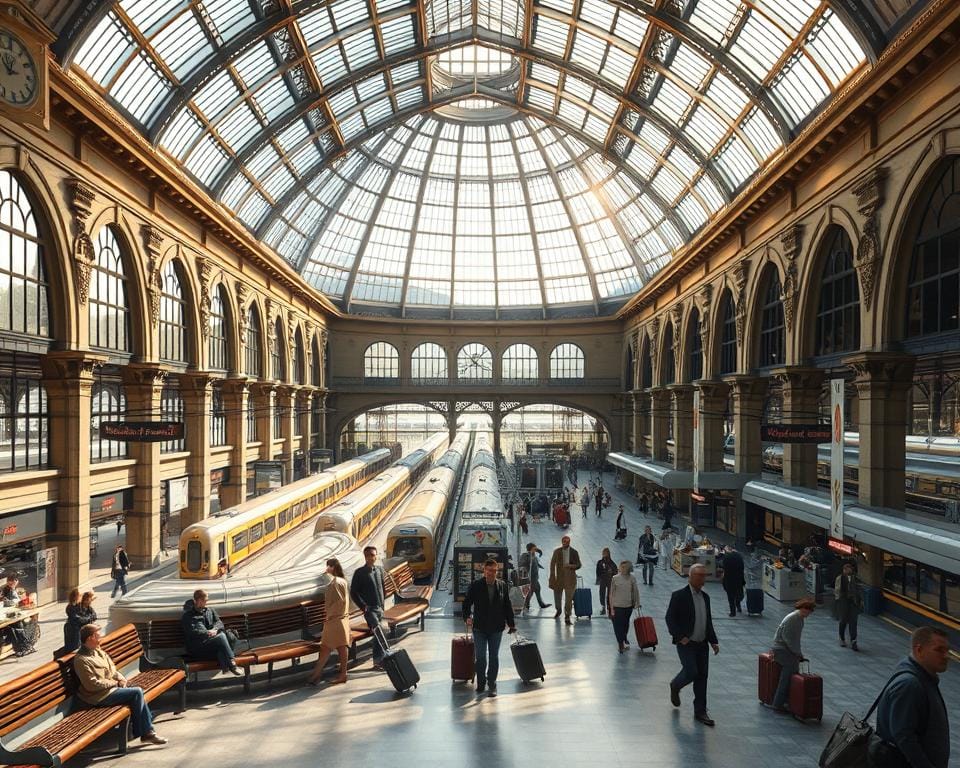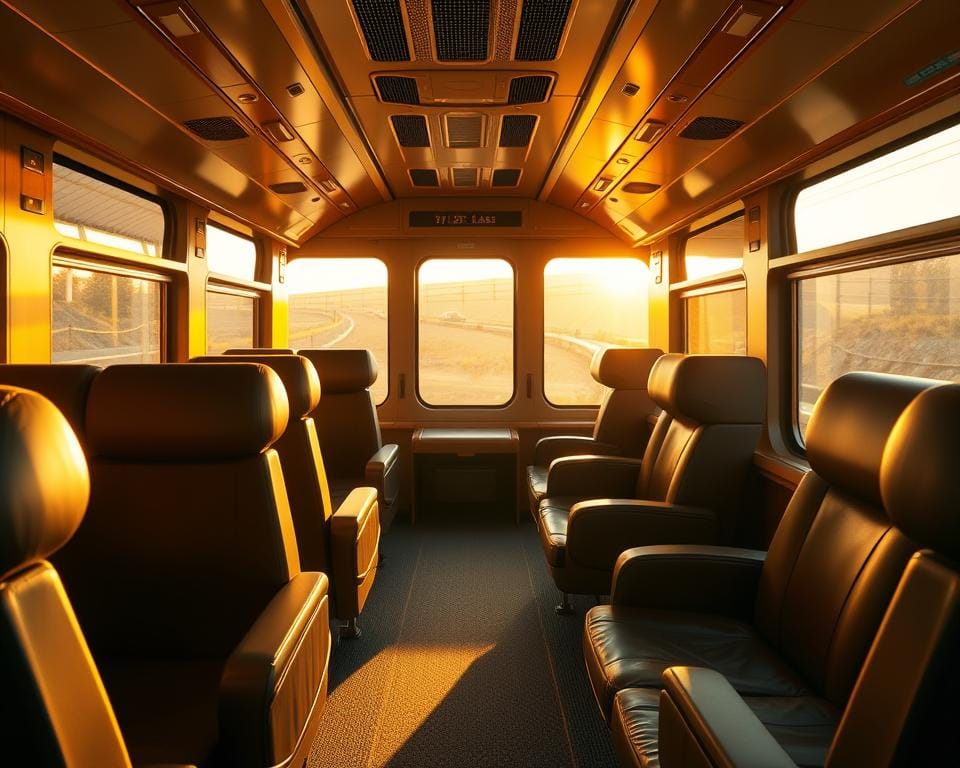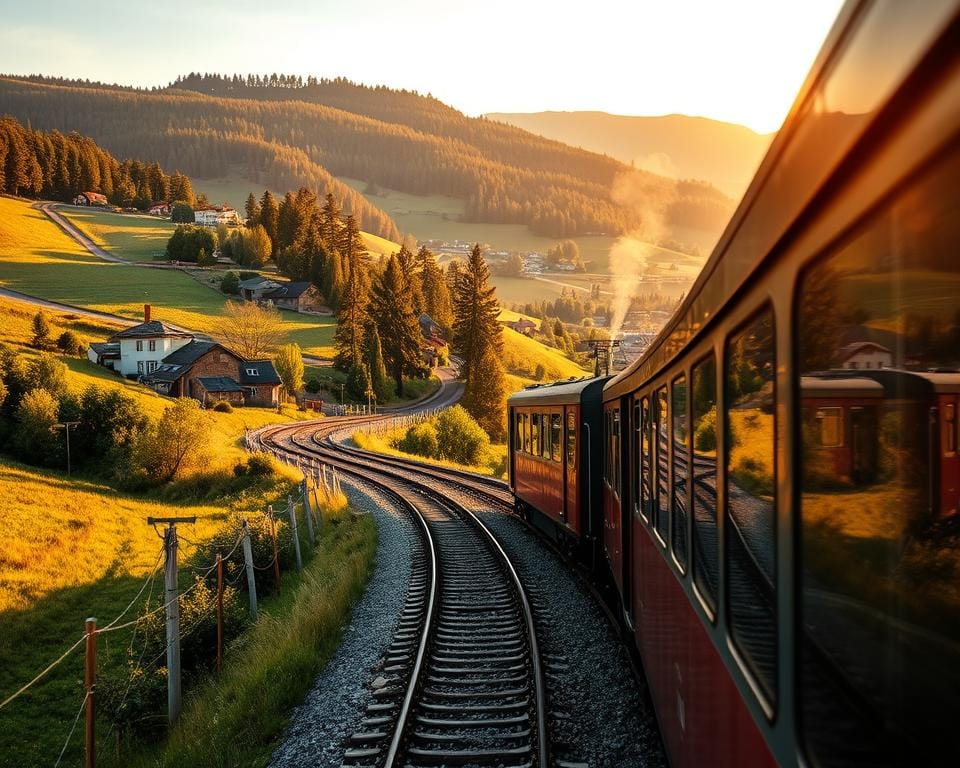Picture this: you’re sipping coffee as snow-capped Alps glide past your window, no seatbelt sign in sight. Sounds dreamy, right? But here’s the rub – not every European adventure works better by rail. After seven years of crisscrossing the continent, I’ve learned when those gleaming carriages truly shine… and when that £9.99 flight might actually serve you better.
Let’s cut through the romance. Trains win hands-down for city-centre arrivals and jaw-dropping routes like Switzerland’s Glacier Express. But if you’re racing from Lisbon to Tallinn? Those budget airlines start looking proper tempting. The magic lies in knowing exactly when to choose rails over runways.
Through trial and error (and the occasional platform sprint), I’ve cracked the code for stress-free rail adventures. You’ll learn why French and German ticket systems behave like rival football teams, how to dodge £50 reservation fees, and why that 6am regional service might become your favourite journey. No jargon – just proper practical nuggets from someone who’s missed connections so you don’t have to.
Key Takeaways
- Rail excels for short hops and scenic routes, while flights often suit longer distances
- Major stations place you in city centres, saving time and transport costs
- Booking strategies vary wildly between countries – flexibility pays off
- Essential apps and a printed timetable can prevent mid-journey panic
- Overnight services combine travel and accommodation savings
Getting Started with Train Travel in Europe
There’s a special thrill in stepping off a carriage straight into the heart of Barcelona or Vienna, suitcase rolling behind you as the city’s energy envelops you immediately. This is where train travel outshines other options – no dreary airport transfers or motorway traffic jams. Just you, your rucksack, and cobblestone streets waiting outside the station doors.
Why Choose Train Travel in Europe?
I’ll never forget watching the Swiss countryside transform from emerald valleys to glacial peaks while sipping hot chocolate in a panoramic carriage. That’s the magic of European trains – they turn transit into discovery. You’ll stretch your legs in spacious seats, charge devices at every table, and often find better Wi-Fi than your local café back home.
City-centre arrivals mean saving £20-£40 on taxi fares you’d spend trekking from outlying airports. Missed a connection? Stations connect seamlessly to trams, buses, and metros – I’ve hopped from Paris to Brussels to Amsterdam using nothing but platform signs and a decent cappuccino.
Understanding the Scenic Journey
Some routes are destinations themselves. Take Norway’s Flåm Railway or the Bernina Express through the Alps – these aren’t just transport, but moving postcards. I’ve spent hours glued to windows as fishing villages melted into medieval castles, all without security queues or cramped legroom.
Yes, buses and planes might save a few quid. But can they offer sunset views over the Rhine Valley or spontaneous chats with Bavarian grandmothers sharing sweets? That’s the cultural heartbeat you’ll find rolling through Europe by rail.
Deciding If Train Travel is Right for You
Grab your morning cuppa and let’s get real – choosing between rails and runways isn’t just about ticking boxes. That moment when sunrise over the Rhine Valley makes your £9 croissant taste divine? That’s when prioritising experience pays off. But when you’re racing from Berlin to Budapest on a shoestring, that budget airline seat suddenly looks proper appealing.
Assessing Your Travel Priorities
I learned this lesson hauling luggage through Frankfurt Airport at midnight. Trains win when you value stress-free arrivals and legroom. Buses save pounds but cost in comfort – I’ve done six-hour trips where my knees met my chin. Flights? Brilliant for hopping from Lisbon to Helsinki quickly, but add two hours for security and transfers.
My rule: under four hours, trains rule. Over eight? Check Skyscanner. For mid-length trips, I fire up Omio to compare all options side-by-side. Last month, a Leeds-to-Lyon journey showed trains costing £30 more than flights – but saved me £50 in airport transfers and stress headaches.
Comparing with Other Transport Options
Let’s crunch numbers. That £19 Ryanair seat from London to Barcelona looks steal-worthy until you add:
- £25 Heathrow Express
- £15 checked bag
- 90-minute early arrival
Suddenly the £65 direct train from St Pancras starts making sense. Regional differences matter too – Swiss trains run like Rolexes, while Greek islands demand ferries. Comfort-seekers will adore German ICE trains’ dining cars. Budget warriors might prefer Flixbus’s £10 naps.
| Train | Plane | Bus | |
|---|---|---|---|
| London-Paris | 2h16m (£59) | 1h15m + 3h transfers (£45) | 7h (£28) |
| Berlin-Munich | 4h (£39) | 1h + 2h transfers (£55) | 6h (£19) |
| Rome-Florence | 1h32m (£23) | Not viable | 3h (£12) |
Your ideal choice? It’s like ordering a pint – depends whether you’re thirsty for speed, savings, or scenery. No wrong answers, just smart matches to what makes your trip sing.
How to Travel Europe by Train: Key Considerations
Ever tried solving a jigsaw puzzle where each piece comes from a different box? That’s continental rail planning in a nutshell. What works in France might baffle you in Poland – I learned this the hard way when my ‘perfect’ Berlin-to-Prague route required three separate bookings. But don’t let that put you off. With the right approach, you’ll stitch together routes smoother than a Savile Row suit.

Planning Your Route with Confidence
Rail networks here behave like eccentric relatives – similar DNA, wildly different personalities. Switzerland’s SBB app gives real-time platform changes, while Italy’s Trenitalia often updates departures last-minute. My golden rule? Always check both national and cross-border options. That Vienna-to-Budapest trip might be cheaper through ÖBB than Rail Europe.
Peak seasons demand early action. I once watched £29 Barcelona-Madrid tickets triple by July. Yet in Germany, same-day fares often stay reasonable. Tools like Deutsche Bahn’s ‘Sparpreis Finder’ uncover hidden deals if you’re flexible. Pro tip: Pad your schedule – regional connections in rural areas can be as reliable as British summer weather.
Setting a Budget and Travel Goals
Your money stretches differently across borders. Spain’s high-speed AVE trains cost more than Portugal’s slower services, but shave hours off journeys. Ask yourself: Are alpine vistas worth Switzerland’s premium fares, or would Slovenia’s equally stunning routes better suit your wallet?
- Fixed fares: Ideal for planners (UK, most Eastern Europe)
- Dynamic pricing: Requires strategy (France, Italy, Spain)
- Scenic premiums: Justified splurges (Norway, Swiss passes)
I allocate 30% of my transport budget to ‘wildcard’ routes – spontaneous detours that often become trip highlights. That unplanned stop in Český Krumlov? Worth every koruna saved on pre-booked Austrian tickets.
Understanding Pricing: Fixed versus Dynamic
Imagine buying theatre seats where prices never change versus scrambling for last-minute concert tickets. That’s the fundamental difference between Europe’s rail pricing models. Getting this right can save you hundreds – or leave you cursing at ticket machines.
Exploring Fixed Fare Systems
In Belgium and the Netherlands, tickets work like metro fares – same price whether you book months ahead or minutes before departure. I’ve rocked up to Antwerp station with 10 minutes to spare and paid exactly what my mate did three weeks prior. Perfect for spontaneous day trips or delayed connections.
Fixed systems shine when plans might shift. Missed your Brussels-to-Amsterdam train? Just hop the next one without penalty. But remember: these countries often lack seat reservations, meaning summer weekends get cosy. Pack patience with your stroopwafels.
Navigating Dynamic Pricing Models
Germany and Italy play a different game. Book early, and you’ll snag Milan-Rome tickets for £19. Leave it late? That’s £55 staring back from the screen. I once saved 62% on a Frankfurt-Berlin journey by booking eight weeks out – enough for two decent Berliner currywurst dinners.
| Country | Booking Period | Average Savings |
|---|---|---|
| Germany | 12 weeks advance | 58% |
| Italy | 8 weeks advance | 49% |
| France | 4 weeks advance | 37% |
Dynamic pricing demands strategy. Use national rail apps to set fare alerts, and avoid Friday afternoon releases when business travellers spike prices. Your wallet will thank you during peak seasons when costs balloon faster than a Parisian soufflé.
Booking Your Tickets: Online and In-Person Options
Tickets in hand, you’re ready to roll – but where’s the best place to secure those golden passes? Let’s break down your options without the jargon. I’ve spent hours comparing platforms, from clunky dropdown menus to slick apps that felt like ordering Deliveroo.
Using Official National Rail Websites
National operators often offer the cheapest fares, but it’s like navigating different dialects. Booking Paris-Lyon tickets through SNCF’s website saved me £12 versus third-party sites. But when I tried Poland’s PKP portal? Let’s just say Google Translate became my best mate.
Key perks:
- No service fees (hello, extra pastry budget)
- First access to promotions and seat maps
- Real-time cancellation updates direct from the source
Benefits of Third-Party Ticket Portals
Platforms like Omio became my go-to for multi-country trips. Yes, there’s a small fee – but avoiding the “which website handles Berlin-Prague?” panic? Worth every penny. Their app stores all tickets in one place, crucial when you’re sprinting through Munich Hauptbahnhof.
Why I use them:
- English-language support across all routes
- Familiar payment processes (goodbye, declined cards)
- Combined bookings for trains + buses when needed
| National Sites | Third-Party | |
|---|---|---|
| Price | Usually cheapest | +3-8% fee |
| Ease | Variable | Consistent |
| Support | Local languages | 24/7 English |
My rule? Simple journeys = official sites. Complex routes = third-party convenience. Either way, you’ll be munching Swiss chocolates in your window seat sooner than you think.
Choosing Your Ticket Class: First or Second
Ever wondered if first class rail tickets are worth the splurge? After countless journeys, I’ve discovered it’s less about luxury and more about matching your needs. The gap between classes here feels more like premium economy versus business class than the stark airline divide.

Advantages of First Class
First class shines during long hauls. On a Vienna-Budapest overnight trip, I appreciated the extra legroom and power outlets at every seat. Carriages typically have 2+1 seating, meaning no awkward elbow battles with strangers. Quieter environments make it easier to work or nap – crucial when juggling meetings between cities.
Some operators sweeten the deal with perks. ÖBB’s Railjet services offer complimentary newspapers and drinks. But don’t expect champagne showers – upgrades vary wildly. Swiss trains might give you a fancy headrest, while French TGVs simply offer emptier carriages.
Practical Benefits of Second Class
Second class delivers surprising comfort for the price. Most seats still have tables and charging ports – amenities you’d pay extra for on budget flights. I’ve met fascinating locals here too, from Amsterdam students to Sicilian nonnas sharing biscotti.
Weekday commuter routes often pack both classes equally. Save your pounds for weekends or scenic routes where first class makes a noticeable difference. Pro tip: Some operators let you upgrade onboard for a tenner if seats are available.
| Feature | First Class | Second Class |
|---|---|---|
| Seat Pitch | 102-110cm | 89-96cm |
| Power Outlets | All seats | Most seats |
| Wi-Fi | Premium access | Standard |
| Food Service | At-seat (selected routes) | Café car |
Your choice boils down to journey length and tolerance for bustle. For two-hour sprints between capitals, second class works perfectly. Tackling an eight-hour cross-border marathon? Those first class inches might just save your sanity.
Deciding on Seat Reservations and Carriage Types
The moment you board without a reserved seat, the real adventure begins. I’ve learned this through panicked dashes down aisles and awkward ‘is this taken?’ exchanges. Let’s demystify Europe’s seating systems so you can claim your spot with confidence.
Reserved Seats vs Non-Reserved Options
Reserved seats act like golden tickets during summer madness. On a packed Milan-Venice service, mine saved me from standing next to a bloke’s pungent cheese platter. For €4-10 extra, you’ll guarantee:
- A numbered spot (no musical chairs)
- Peace of mind during peak seasons
- Group seating for families or mates
Non-reserved carriages work for spontaneous day trips. But I’d avoid them on Friday afternoons – regional commuters pack tighter than tinned sardines.
Specialised Carriage Features
Trains aren’t one-size-fits-all. Look for:
- Silent zones (no chatty Cathy’s)
- Bike storage near doors
- Accessible spaces with wider aisles
I once scored a ‘landscape’ carriage in Switzerland with ceiling windows – perfect for Alpine views. Pro tip: Check carriage diagrams on platform screens to find your ideal setup before boarding.
| Reservation Type | Best For | Typical Cost |
|---|---|---|
| Mandatory | High-speed routes | €5-15 |
| Optional | Regional services | €0-8 |
| Not Available | Short hops | Free-for-all |
Essential Tips for Selecting the Perfect Seat
Choosing where to park your bum on a train isn’t just about comfort—it’s a tactical game. Your seat choice determines whether you’ll spend the journey wrestling luggage or soaking up panoramic views. Let’s crack the code for stress-free positioning.
Finding Extra Luggage Space
I learned this lesson hauling a 20kg case through a packed Italian regional service. Carriage ends hide the best storage—look for vertical racks near doors when boarding. Overhead shelves work for rucksacks, but avoid aisles if you’ve got bulky items. Regional trains? They’re the wild west of luggage space. I once wedged my case between back-to-back seats in Switzerland—genius hack when lifts aren’t available.
Window seats dazzle with views but trap you from checking bags. Aisle spots let you monitor belongings, though expect elbow bumps from passing tea trolleys. Forward-facing seats reduce motion sickness, while rear-facing ones sometimes offer extra legroom. Pro tip: Book near toilets for quick access, but bring earplugs—those sliding doors clatter like castanets.
Here’s my seat strategy:
- Long journeys: Aim for carriage ends with luggage racks
- Short hops: Grab any aisle seat for easy exits
- Scenic routes: Window seats, but check overhead space first
Save yourself the platform panic—a smart seat choice turns chaotic journeys into breezy adventures. Trust me, your future self will thank you when gliding past Provençal vineyards hands-free.
Navigating Major European Train Stations
Stepping into Frankfurt Hauptbahnhof during rush hour felt like entering a beehive – 25 platforms buzzing with commuters, shops and underground metros. Major cities often have multiple stations, each serving different routes. I once sprinted to Berlin’s Gesundbrunnen only to realise my train left from Ostbahnhof. Lesson learned: always double-check departure points.
Arriving Early and Locating Platforms
Give yourself 20 minutes minimum in unfamiliar stations. Platforms often change last-minute – Milan Centrale once swapped my track as I boarded. Look for yellow train symbols on signs, not local language terms. Pro tip: snap a photo of departure boards showing platform numbers and final destinations.
| City | Main Stations | Platforms | Key Tip |
|---|---|---|---|
| Paris | Gare du Nord, Lyon, Est | 15-30 | Follow blue ‘Grandes Lignes’ signs |
| Berlin | Hauptbahnhof, Ostbahnhof | 14 | Level -1 for regional trains |
| London | St Pancras, Paddington | 12-15 | Check upper vs lower concourse |
| Madrid | Atocha, Chamartín | 20+ | Palmas level for high-speed |
Understanding Station Layouts
Most major stations stack services vertically. Zurich HB’s underground trams sit beneath shops and mainline platforms. If lost, head to red ‘i’ info desks – staff usually speak English. Left luggage lockers cluster near platform entrances, perfect for layovers.
Watch for colour-coded zones. Amsterdam Centraal uses letters (Platforms 1a-15b), while Leipzig splits into Halls A-D. Stations like Brussels Midi hide bike rentals behind escalators – always scout maps near ticket machines first.
Preparing for Your Journey: Packing and Snacks
Let’s talk about the unglamorous essentials that make or break rail adventures. Through trial and error, I’ve learned smart packing beats overpacking every time. Compression cubes transform chaotic suitcases into Tetris victories, while a foldable tote stashed in your rucksack handles spontaneous market finds.
Snack strategy matters more than you’d think. I always pack reusable containers with nuts and dried fruit – perfect between connections. Avoid crumbly pastries unless you fancy vacuuming your seat. Hydration’s key: collapsible bottles refill at station fountains, saving £3 per plastic purchase.
Essential non-obvious items? A portable charger with EU adaptor, earplugs for chatty carriages, and plasters for platform dashes. I once survived a delayed Brussels-Cologne trip thanks to emergency Haribo and a printed timetable. Pro tip: grab fresh sandwiches at major stations – they’re cheaper than onboard menus.
Remember: the right prep lets you focus on what matters – watching castles emerge through morning mist without rummaging for lost socks.

